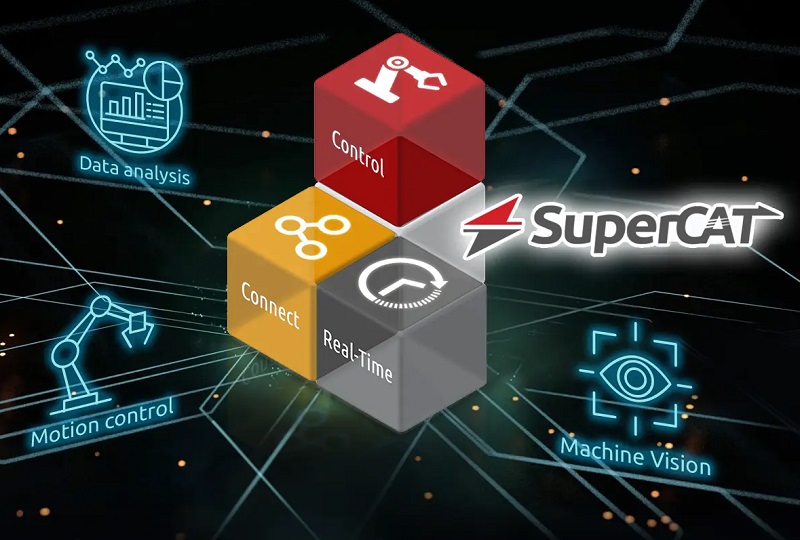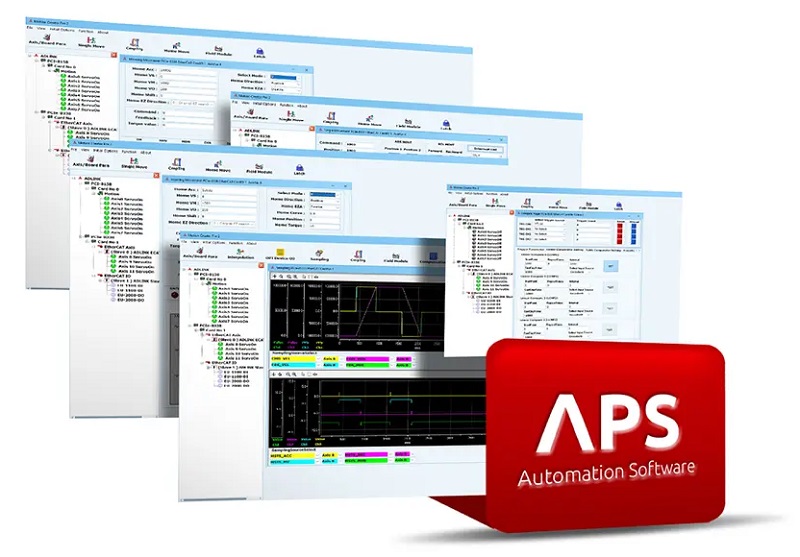ADLINK Releases SuperCAT Series for Enhanced Automation Motion Control
ADLINK brings its customers a software-defined EtherCAT motion controller, the SuperCAT series, for the optimization of multi-axis motion control for industrial automation processes.
Global provider of artificial intelligence (AI)-driven edge hardware, software, and services, ADLINK Technology, Inc., has announced the release of its SuperCAT series. The software-defined EtherCAT motion controller has been designed to improve upon hardware-based alternatives in terms of speed, performance, flexibility, and ease of integration with existing software-defined automation systems and components.

The SuperCAT series aids simultaneous and collaborative teamwork across data processing, process optimization, machine vision, and motion control. Image used courtesy of ADLINK
The SuperCAT Series
The ADLINK SuperCAT series can support up to 128 synchronized axes and more than 10,000 points at the same time. 128-axis synchronous control is the capacity to simultaneously control and coordinate the movements of up to 128 axes, where, in the scope of automation and motion control systems, ‘axis’ refers to an actuator or motor that is in charge of regulating the movement of a particular system or component.
The controllers provide users with rapid cycle times between 4ms to 125μs, which is intended to optimize synchronous input/output performance for automation applications across electronics manufacturing and semiconductor testing and packaging. SuperCAT integrates with a real-time operating system, which facilitates multitasking and the coordination of numerous teams working on data processing, motion control, and machine vision, all at the same time.
Users can take advantage of “one-stop shopping” with SubDevice and MainDevice modules that are compatible with more than 30 ecosystem partners. Another highlight of the SuperCAT series is that data transmission is not restricted by limitations in bandwidth from PCI/PCIe interfaces. Peripheral device connections to the motherboard of a computer are frequently made using the computer bus interfaces PCI and PCIe (Peripheral Component Interconnect [Express]). One EtherNet 100/1000 port is required to provide the physical connection for the EtherCAT connection to the peripheral devices.

With SuperCAT, users can access ADLINK’s APS function library to enhance motion control management. Image used courtesy of ADLINK
With three levels of precision commands—interpolation, point-to-point (P2P), and application-ready functions—the motion functions in this system are made to meet particular needs. According to the needs of the application, this enables flexibility and modification. The system supports CPUs ranging from Intel Atom to Xeon processors, providing a wide variety of performance capacities. This guarantees the system's ability to adjust to different computational demands and supply the power required for effective motion control. The system also has a wide range of hardware alternatives, enabling installation through USB or file transfer, offering adaptability and simplicity in setting up the system to satisfy certain requirements.
What are the Benefits of Software-Defined?
Compared to their conventional hardware-based equivalents, software-defined EtherCAT motion controllers provide a number of advantages. First off, they offer scalability and flexibility, allowing users to adapt software configurations to various application requirements. This permits smooth interaction with various hardware configurations and makes it easier to expand or modify the system in the future without having to make significant hardware changes. Second, software-defined motion controllers are cost-effective since they don't require as many dedicated pieces of hardware, lowering the material costs, making maintenance more straightforward, and allowing for future updates.
These controllers also exhibit intuitive software development kits and user-friendly interfaces, allowing developers to concentrate on high-level motion control and programming algorithms instead of intricate low-level hardware details. Software-defined motion controllers employ the use of contemporary computing platforms to provide accurate and reactive motion control, enhancing performance. Furthermore, these controllers can connect with other software-defined automation systems, fostering centralized control and interoperability within a wider automation ecosystem. Finally, they feature maintenance and remote monitoring capabilities, enabling operators to check on, repair, and update the motion controller remotely, reducing downtime and the need for on-site maintenance.
SuperCAT Motion Control
Overall, the SuperCAT series is designed to minimize costs associated with the integration and maintenance of hardware-based systems and provide improved interconnectivity for industrial automation processes.

 Facebook
Facebook Google
Google GitHub
GitHub Linkedin
Linkedin








